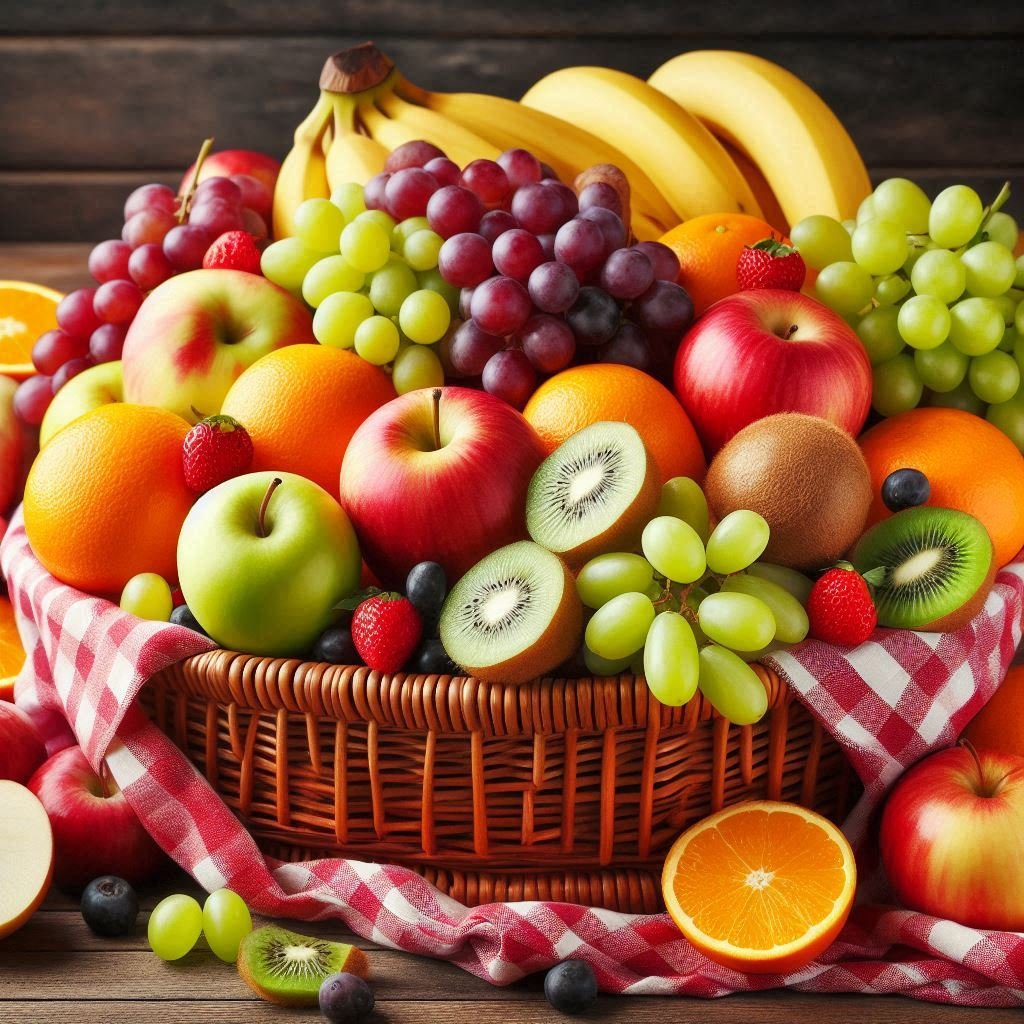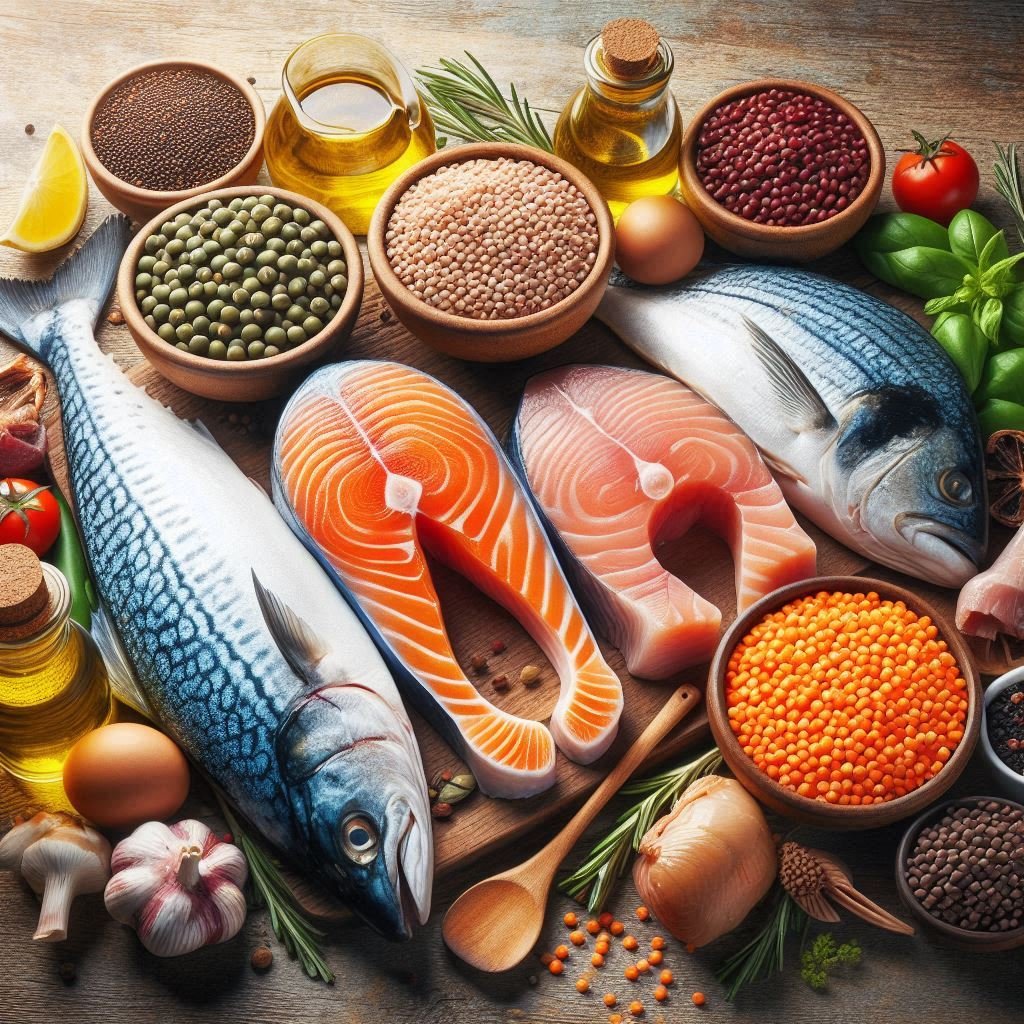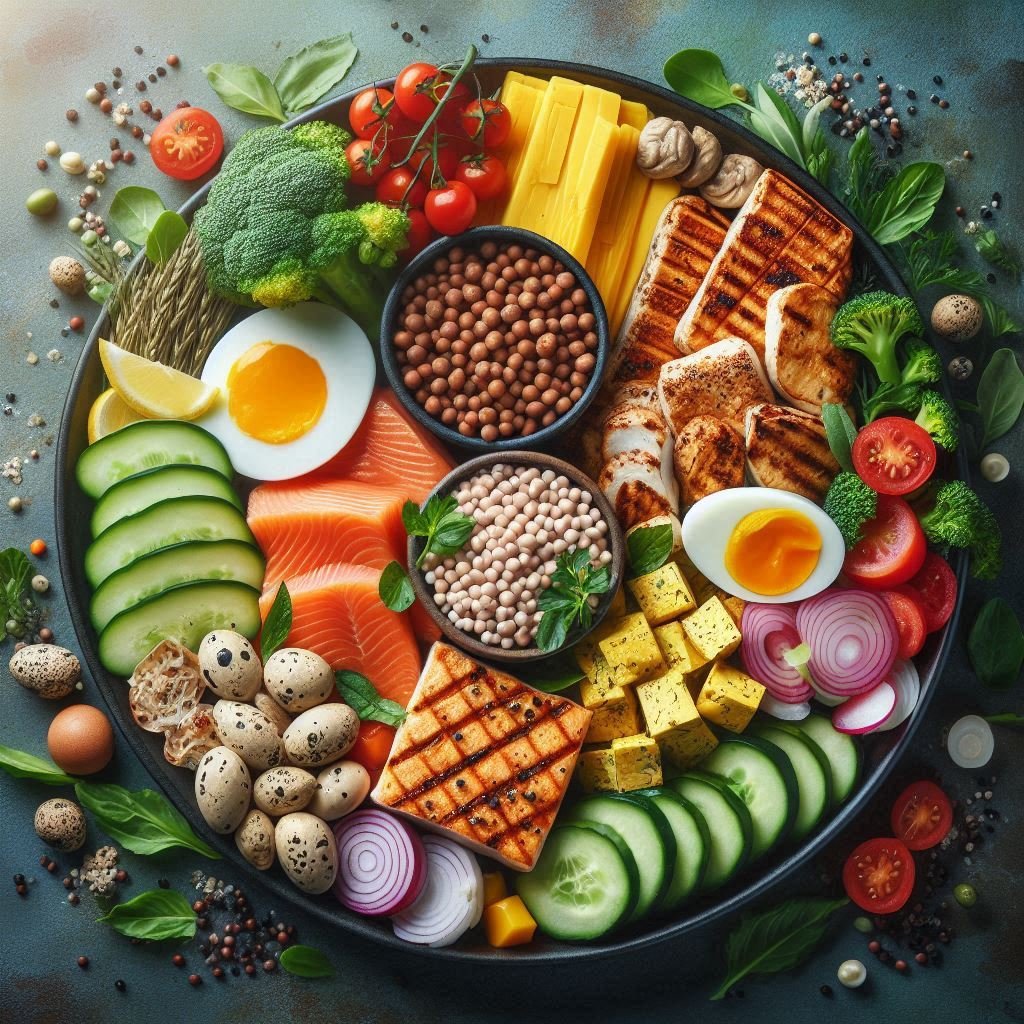Managing blood sugar levels is crucial for individuals living with diabetes. While medication and lifestyle changes are essential, a well-planned diet can also play a significant role in regulating blood sugar levels.
Eating the right foods can help stabilize blood sugar, improve insulin sensitivity, and even reduce the risk of complications.
In this article, we’ll explore the 14 best diabetic foods that can help you achieve better blood sugar control, from nutrient-dense fruits and vegetables to protein-rich lean meats and whole grains. Incorporate these foods into your diet to take the first step towards a healthier, more balanced lifestyle.
Fruits

1. Apples: A Fiber-Rich Snack to Regulate Blood Sugar
Apples are a delicious and nutritious fruit that can help regulate blood sugar levels. One medium-sized apple contains about 4 grams of fiber, which can slow down the digestion of sugar and reduce the risk of blood sugar spikes.
Apples are also rich in antioxidants, including quercetin, which has been shown to improve insulin sensitivity and reduce inflammation.
To incorporate apples into your diet, try snacking on a medium-sized apple with a tablespoon of almond butter or peanut butter for added protein and healthy fats. You can also add sliced apples to your oatmeal or yogurt for a fiber-rich breakfast.
2. Berries: Antioxidant-Packed Fruits to Boost Insulin Sensitivity
Berries are a powerhouse of antioxidants and fiber, making them an excellent addition to a diabetic diet. Berries such as blueberries, strawberries, and raspberries are rich in anthocyanins, which have been shown to improve insulin sensitivity and reduce inflammation.
Berries are also low in calories and high in fiber, making them an excellent snack for diabetics. One cup of mixed berries contains only 60 calories and 4 grams of fiber. You can add berries to your oatmeal, yogurt, or salads for a burst of flavor and nutrition.
Vegetables

3. Leafy Greens: Spinach, Kale, and Collard Greens to Lower Blood Sugar
Leafy greens such as spinach, kale, and collard greens are rich in magnesium, a mineral that can help regulate blood sugar levels. Magnesium deficiency has been linked to insulin resistance and type 2 diabetes, making leafy greens an essential addition to a diabetic diet.
Leafy greens are also low in calories and high in fiber, making them an excellent addition to salads, smoothies, and sautéed dishes. One cup of cooked spinach contains only 7 calories and 4 grams of fiber.
4. Broccoli: A Cruciferous Vegetable to Improve Insulin Function
Broccoli is a cruciferous vegetable that contains a compound called sulforaphane, which has been shown to improve insulin function and reduce inflammation. Broccoli is also rich in fiber, vitamins, and minerals, making it an excellent addition to a diabetic diet.
To incorporate broccoli into your diet, try steaming it as a side dish or adding it to soups and stews. You can also roast broccoli with olive oil and spices for a delicious and healthy snack.
5. Carrots: A Low-Calorie, High-Fiber Snack for Diabetics
Carrots are a low-calorie, high-fiber snack that can help regulate blood sugar levels. One medium-sized carrot contains only 25 calories and 2 grams of fiber, making it an excellent snack for diabetics.
Carrots are also rich in antioxidants, including beta-carotene, which has been shown to improve insulin sensitivity and reduce inflammation. To incorporate carrots into your diet, try snacking on raw carrots with hummus or guacamole for added protein and healthy fats.
Protein-Rich Foods

6. Fatty Fish: Salmon, Tuna, and Mackerel to Reduce Inflammation
Fatty fish such as salmon, tuna, and mackerel are rich in omega-3 fatty acids, which have been shown to reduce inflammation and improve insulin sensitivity. Omega-3 fatty acids can also help reduce the risk of heart disease, a common complication of diabetes.
To incorporate fatty fish into your diet, try grilling or baking salmon or mackerel for a healthy and delicious dinner. You can also add canned tuna to salads or sandwiches for a protein-rich snack.
7. Lean Meats: Chicken, Turkey, and Pork to Support Insulin Regulation
Lean meats such as chicken, turkey, and pork are rich in protein and low in fat, making them an excellent addition to a diabetic diet. Protein can help regulate blood sugar levels and improve insulin sensitivity.
To incorporate lean meats into your diet, try grilling or baking chicken or turkey breast for a healthy and delicious dinner. You can also add sliced lean meats to salads or sandwiches for a protein-rich snack.
8. Lentils: A Plant-Based Protein Source to Lower Blood Sugar
Lentils are a plant-based protein source that can help regulate blood sugar levels and improve insulin sensitivity. Lentils are rich in fiber, vitamins, and minerals, making them an excellent addition to a diabetic diet.
To incorporate lentils into your diet, try adding them to soups, stews, or curries for a protein-rich and fiber-rich meal. You can also use lentils as a substitute for meat in dishes such as veggie burgers or meatballs.
Whole Grains

9. Brown Rice: A Complex Carbohydrate to Regulate Blood Sugar
Brown rice is a complex carbohydrate that can help regulate blood sugar levels and improve insulin sensitivity. Brown rice is rich in fiber, vitamins, and minerals, making it an excellent addition to a diabetic diet.
To incorporate brown rice into your diet, try using it as a side dish or adding it to salads and stir-fries. You can also use brown rice as a base for healthy and delicious bowls with grilled chicken or fish.
10. Quinoa: A Protein-Rich Grain to Improve Insulin Sensitivity
Quinoa is a protein-rich grain that can help regulate blood sugar levels and improve insulin sensitivity. Quinoa is rich in fiber, vitamins, and minerals, making it an excellent addition to a diabetic diet.
To incorporate quinoa into your diet, try using it as a side dish or adding it to salads and stir-fries. You can also use quinoa as a base for healthy and delicious bowls with grilled chicken or fish.
Dairy and Alternatives

11. Greek Yogurt: A High-Protein Snack to Support Insulin Regulation
Greek yogurt is a high-protein snack that can help regulate blood sugar levels and improve insulin sensitivity. Greek yogurt is rich in protein, calcium, and probiotics, making it an excellent addition to a diabetic diet.
To incorporate Greek yogurt into your diet, try snacking on it with berries or honey for added fiber and antioxidants. You can also use Greek yogurt as a base for healthy and delicious smoothies with spinach or protein powder.
12. Almond Milk: A Low-Calorie, Low-Carb Alternative to Regular Milk
Almond milk is a low-calorie, low-carb alternative to regular milk that can help regulate blood sugar levels and improve insulin sensitivity. Almond milk is rich in vitamins and minerals, making it an excellent addition to a diabetic diet.
To incorporate almond milk into your diet, try using it as a substitute for regular milk in smoothies, oatmeal, or cereal. You can also use almond milk as a base for healthy and delicious soups or curries.
Healthy Fats

13. Avocado: A Rich Source of Healthy Fats to Improve Insulin Function
Avocados are a rich source of healthy fats that can help regulate blood sugar levels and improve insulin function. Avocados are rich in monounsaturated fats, which have been shown to improve insulin sensitivity and reduce inflammation.
To incorporate avocados into your diet, try adding them to salads, sandwiches, or smoothies for added healthy fats and fiber. You can also use avocado oil as a healthy alternative to olive oil for cooking and dressings.
14. Nuts and Seeds: Almonds, Chia Seeds, and Flaxseeds to Support Blood Sugar Control
Nuts and seeds such as almonds, chia seeds, and flaxseeds are rich in healthy fats, protein, and fiber, making them an excellent addition to a diabetic diet. These foods can help regulate blood sugar levels and improve insulin sensitivity.
To incorporate nuts and seeds into your diet, try snacking on them as a healthy and delicious snack. You can also add them to oatmeal, yogurt, or salads for added protein and fiber.
FAQs
Q: Can I eat these foods if I’m not diabetic?
A: Yes, these foods are beneficial for anyone looking to maintain healthy blood sugar levels and improve overall health. They are rich in nutrients, fiber, and antioxidants, making them a great addition to a balanced diet.
Q: How often should I eat these foods?
A: Aim to include these foods in your diet 3-5 times a week, depending on your individual needs and health goals. You can incorporate them into your meals and snacks, and adjust the portion sizes based on your calorie needs.
Q: Can I eat these foods if I’m on a specific diet, such as keto or vegan?
A: Yes, many of these foods can be adapted to fit specific diets. For example, if you’re on a keto diet, you can focus on the high-fat foods like avocado and nuts. If you’re vegan, you can focus on the plant-based foods like lentils, chickpeas, and berries.
Q: Are there any foods that I should avoid if I have diabetes?
A: Yes, there are certain foods that can worsen blood sugar control and insulin sensitivity. These include sugary drinks, refined carbohydrates, processed meats, and foods high in saturated and trans fats. It’s best to limit or avoid these foods and focus on whole, nutrient-dense foods.
Q: Can I take supplements instead of eating these foods?
A: While supplements can be helpful, it’s always best to get your nutrients from whole foods whenever possible. Whole foods provide a complex mix of vitamins, minerals, and antioxidants that work together to provide optimal health benefits. Supplements should be used under the guidance of a healthcare professional and in addition to a balanced diet.
Q: How long will it take to see results from eating these foods?
A: Everyone’s body is different, and the rate at which you see results will depend on your individual health, diet, and lifestyle. However, many people start to see improvements in blood sugar control and overall health within a few weeks to a few months of making dietary changes. Be patient, stay consistent, and work with a healthcare professional to monitor your progress.




